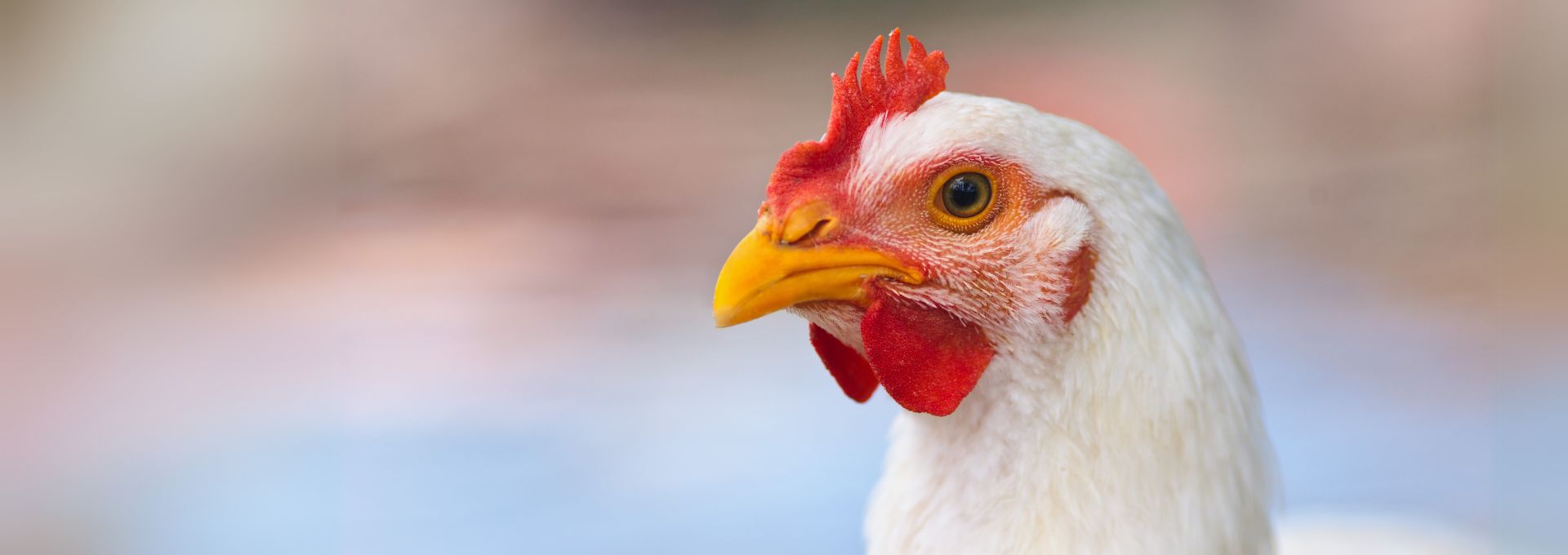Poultry is among the oldest livestock animal of mankind. Various finds are evidence of domestic poultry keeping, for example in Asia, as early as 5,000 BC. Everywhere in the world the consumption of poultry and their eggs is popular. As in domestic cattle and house pigs, the great demand for poultry meat leads to mass and non-animal husbandry around the world. The United States, China and Brazil produce the most poultry meat. The biggest part is the chicken. But also the other common poultry species such as turkeys, ducks, geese, pigeons, quail, guinea fowl, ostriches and wild birds are eaten all over the world.
Chickens
Chickens are derived from the Bankiva chicken. Like their wild ancestors, they belong to the landlords and -breeders. Since 700 BC, the keeping of house-chickens is widespread throughout Europe. It was only after the Middle Ages that chickens were bred and kept for meat and egg production. They prefer to live in smaller groups under the guidance of a cock. A hen (mother hen) breeds 21 days. Then little chicks hatch from the eggs. These are precocial birds and from the first day on independent on food search. Chickens have a (changing) ranking and develop friendships. They are very sociable, rest with each other and also seek the proximity of the people. They can capture, when suffering is done to one of their conspecifics, this brings the entire chicken coaster into excitement.
Broilers
Broilers have a weight of about 42 g when hatching from their eggs. Thanks to its high-performance chuck, which is especially designed for high daily increments, they grow extremely quick. As a result, it is not uncommon for her legs to break under her body weight and to keep her existence under pain. The animals are kept in huge halls (up to 27'000 chickens in Switzerland and abroad up to 100'000). Their immune system is weakened due to mental stress. No wonder the susceptibility to various diseases such as avian influenza is greatly increased. This requires the massive use of pesticides and antibiotics to prevent human contamination. So that the chicken meat is so cheap, the slaughtering was fully rationalized. Today it can only cost about 1 franc per animal!
Laying hens
While the ancestors of today's chickens laid about twelve to twenty eggs a year, specially bred laying hens bring about three hundred a year. Special breeding farms produce millions of hens. However, since half of the hatched chicks are male and thus do not lay eggs, they are slaughtered immediately after hatching (the rearing is not profitable). They are drowned, suffocated or gassed alive in meat-wolves, to end up as animal-meal for food or fertilizer.
To save food, they were bred to low body weight. In order to increase the laying performance, the chickens are often irradiated with artificial light for 17 hours a day. Behavioral disturbances are the result of this attitude. Because too many animals are kept in a confined space, it often happens that the animals are mutually peck. In order to prevent this, in the chick age the upper beaks of many animals are burnt without anesthesia or cut off. But the chickens beak is through numerous nerve tracts as sensitive as our fingertips. The animals still have great pain months after this "amputation."
To be able to build up the eggshells, calcium is extracted from the bone. This is beside the restriction of movement one of the causes for partly fatal diseases like cage paralysis, osteoporosis, fatty liver syndrome. In addition, it is a great stress for the chickens not to be able to withdraw for egg laying; an indescribable torture in the mass poultry farming.
All this, as well as the parasites, which rapidly multiply through factory farming, contribute to the death of many hens before slaughter.
Although the chicken caging is forbidden in Switzerland, it should be abolished in the EU in a few years. To this day, however, the majority of the eggs still come from these chickens, choked up in a confined space, which never see the daylight. But also the permitted soil keeping of the chickens is far away from a life of the kind, as the advertisement always disseminates.
Ducks and geese
Our domestic duck comes from the mallards, the domestic goose from the gray geese. Ducks and geese are waterfowl. They love and need the water to feel good. Together, they bathe and clean themselves to rest next to each other. They also develop preferences towards their individual conspecifics. They love to look for snails and worms in the green meadow or in the water. The breeding time is 25 to 28 days. The small chicks can swim immediately and go with their duck or goose mothers right to the search for food. Both species take well care of their chicks. They can (could) get very old. In industrial factory farming, when used for meat production they do not even reach the age of one year. They are often held in cages or in huge groups and have to suffer a lot (eg by mast and live plucking). They are also worried when something is done to an animal in the group.
- Looking for a purely herbal alternative for eggs? How about MyEy?

